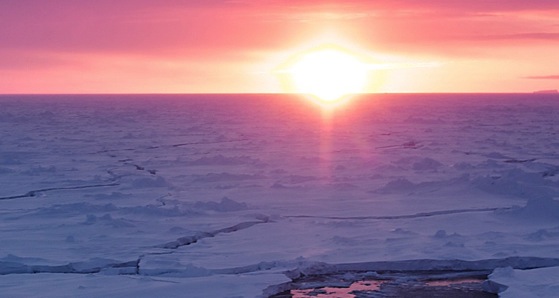Towering waves that rise from cyclones can pummel the frigid waters around Antarctica, potentially wrecking sea ice critical to maintaining global climate. Because researchers predict climate change will bring more and stronger storms in the future, the thrashing swells could help ferry in an ice-free future.
New Zealand researchers deployed five sensors on Antarctic ice floes from about 10 miles to 80 miles from the edge of the ice, reports Live Science.
“Every three hours, the instruments simultaneously woke and measured the waves,” said lead study author Alison Kohout, a scientist at the National Institute of Water and Atmospheric Research in Christchurch, New Zealand. “The data was sent back to us via satellite transmissions.”
The frozen sea water floats on the ocean after forming on the water, making it different from ice shelves which flow from the land to the ocean.
Sea ice covers an estimated 10 million square miles of our planet.
The researchers say this is not related to global warming. “Sea ice melts and grows annually and is unrelated to sea-level rise,” Kohout said. “Sea ice is sometimes confused with ice shelves, which are related to sea level rise.”
However, many climate change models predict increasing storms in the polar regions.
The computer models used in the study suggest large waves can trigger significant fracturing. “Large sheets of sea ice can quickly turn into individual floes,” Kohout said.
And the waves have a greater range than initially believed.
This could help explain why and how Antarctic ice behaves. “This observed change is in contrast to the predictions from climate change models that Antarctic sea ice should have already begun retreating,” Kohout said.
Agencies/Canadajournal
 Canada Journal – News of the World Articles and videos to bring you the biggest Canadian news stories from across the country every day
Canada Journal – News of the World Articles and videos to bring you the biggest Canadian news stories from across the country every day



